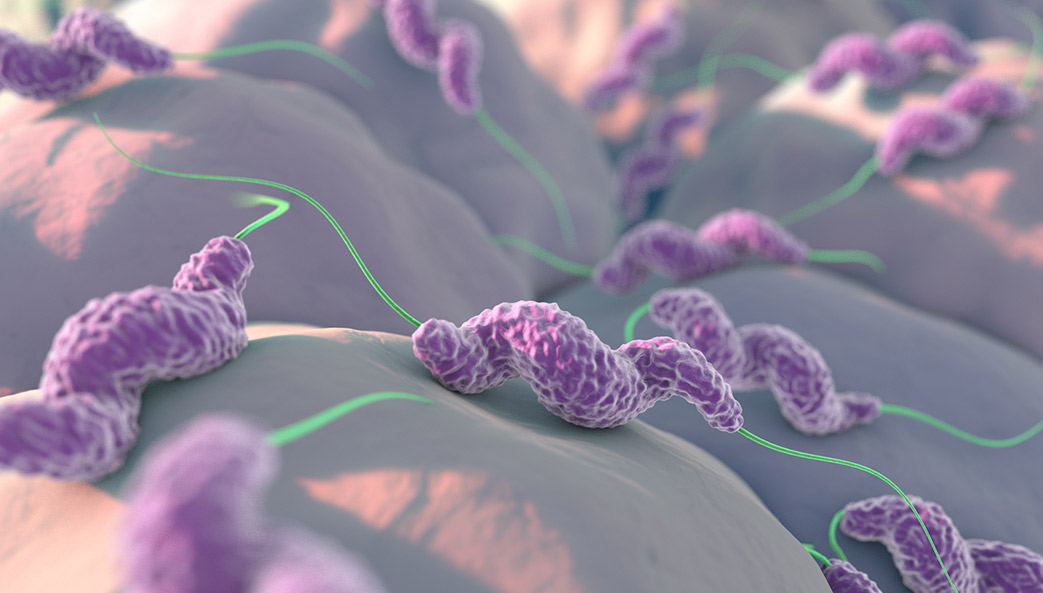Gut check

When the U.S. Navy Medical Research Center teamed up with Johns Hopkins University to test new therapies for Campylobacter, the most common cause of bacterial food poisoning, they recruited volunteers to drink the bacteria. That assignment took guts (literally).
Stephen Trent, a professor of infectious diseases in the university’s College of Veterinary Medicine, carried those studies a step further. Instead of examining the infected humans, Trent’s lab examined the bacteria in the infectious samples produced by the volunteers.
According to the World Health Organization, Campylobacter infects more than a million people every year in the United States alone. The organism lives naturally in poultry and cattle, with no effect, but it causes debilitating diarrhea and severe abdominal cramping in humans.
Understanding how infectious bacteria adapt inside humans can reveal the tools the bacteria use to survive, and those tools can then be targeted and killed with new therapeutics. Out of more than 1,500 genes in the bacteria, the team was able to pinpoint 11 that were associated with persistent infections. Notably, they discovered how one of these genes, cipA, likely helps the bacteria invade human cells during persistent infections.
This brief appeared in the fall 2018 issue of Research Magazine. The original press release is available at https://news.uga.edu/researchers-focus-on-how-bacteria-cause-food-poisoning/.
